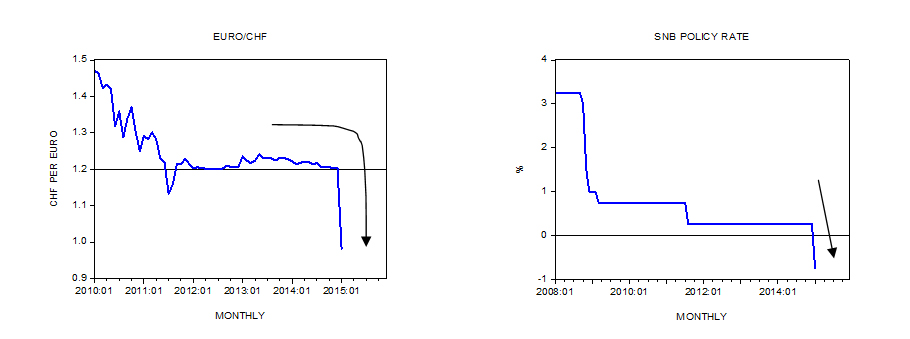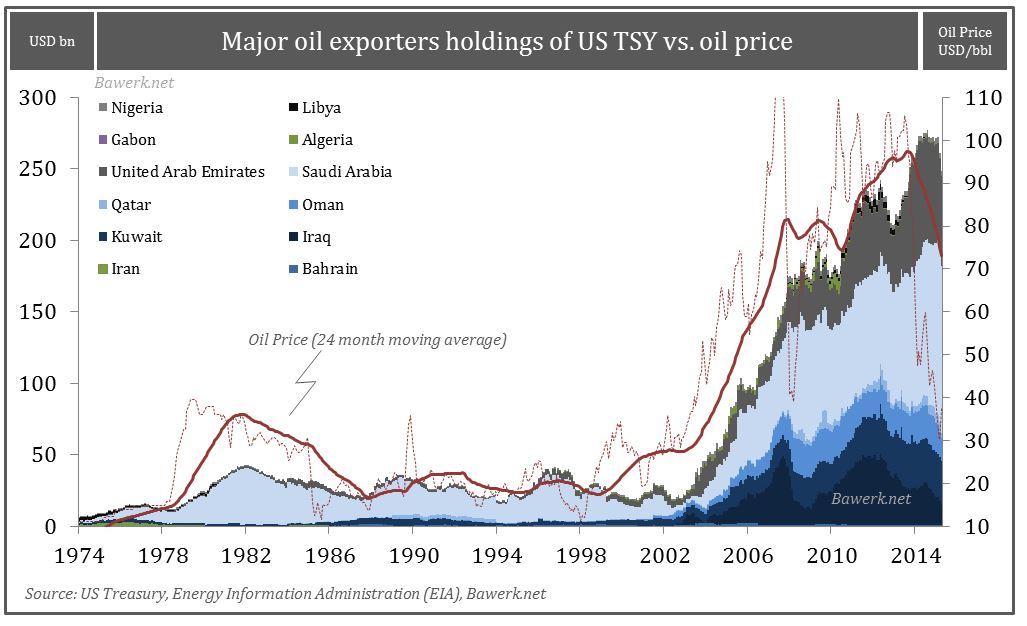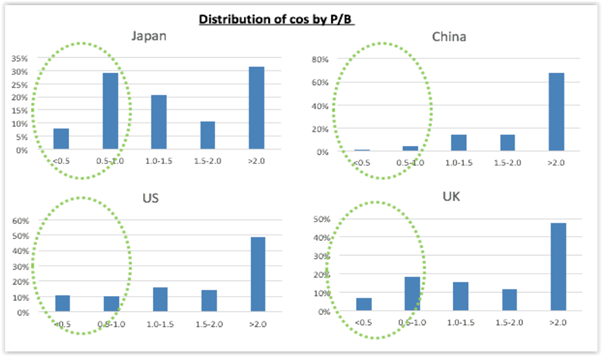By Dr Frank Shostak
For most economic commentators the state of the balance of trade is a key factor in the currency exchange rate determination. On this way of thinking, all other things being equal, an increase in imports, which leads to a trade deficit gives rise to an increase in the demand for foreign currency.
To obtain the foreign currency importers sell the domestic currency for it. As a result, this causes a strengthening in the exchange rate of the foreign currency against the domestic currency i.e. more domestic money per unit of a foreign money.
Conversely, all other things being equal, an increase in exports leads to a trade surplus. Once exporters exchange their foreign currency earnings for domestic money this sets in motion a strengthening in the domestic money exchange rate against the foreign money. (Less domestic money per unit of a foreign money).
Again, if a country exports more than it imports, there is a strengthening in the demand for the country’s goods, and thus, for its currency. Consequently, the price of the domestic money in terms of foreign money is likely to increase.
Conversely, if a country imports more than it exports there is a strengthening in the demand for the foreigners goods and the strengthening in the demand for the foreign currency. Consequently, the increase in the demand for the foreign money lifts the price of the foreign money in terms of domestic money.
Similarly following this way of thinking, if for some reason there is a sudden increase in the foreigners demand for the country’s money this is going to strengthen the domestic currency rate of exchange versus other currencies.
If, however there is a sudden decline in the foreigner’s demand for a country’s money, this is going to weaken the domestic currency rate of exchange against other currencies.
Fundamental versus non-fundamental causes
Often various factors are perceived to be important in determining a currency rate of exchange. For instance, an increase in the government foreign debt is regarded as a sign of a likely deterioration in economic fundamentals ahead. This provides the rationale for the selling of the currency of concern.
Alternatively, consider the case when the central bank tightens its interest rate stance. The increase in the domestic interest rate, all other things being equal, attracts foreigners demand for domestic money. Consequently, this lifts the price of the local currency in terms of foreign currency.
It would appear that various factors such as the government debt, the interest rate differential, the state of the economy and the balance of trade are important factors in the currency exchange rate determination.
We can also add various psychological factors that would appear to be important in the currency exchange rate determination. Thus, a change in individuals’ perceptions regarding the state of the economy is likely to influence the currency rate of exchange.
Rather than focusing on numerous factors, it would make more sense to identify the key or the essential factor that determines the currency rate of exchange. Again, we suggest that what matters here is to identify the essence that dictates the currency rate of exchange determination.
For instance, the essence of individuals’ actions is conscious and purposeful conduct. Or, the essence of money that it is the medium of exchange. Individuals’ exchange goods and services for money.
The relative purchasing power of money – the essence of the exchange rate
As far as the essence of the currency exchange rate determination is concerned, we suggest that this is the relative changes in the purchasing power of various monies.
Now, a price of a basket of goods is the amount of money paid for this basket. We can also say that the amount of money paid for a basket of goods is the purchasing power of money with respect to the basket of goods.
If in the US the price of a basket is one dollar and in the Eurozone an identical basket of goods is sold for two euros then the rate of exchange between the US dollar and the euro is likely to be two euros per one dollar.
An important factor in setting the purchasing power of money is the supply of money. If over time the growth rate in the US money supply exceeds the growth rate of European money supply, all other things being equal, this will put pressure on the US dollar.
Since a price of a good is the amount of money per good, this now means that the prices of goods in dollar terms will increase faster than prices in euro terms, all other things being equal. As a result, an identical basket of goods is priced now; let us say at two dollars against the one dollar previously whilst in the Eurozone 2.5 euros against 2 euros previously.
This would imply that the exchange rate between the US dollar and the euro should be now 1.25 euros per one dollar.
Note that since changes in the domestic money supply affect its general purchasing power with a time lag this means that changes in relative money supply affect the currency rate of exchange also with a time lag.
When money enters a particular market it pushes the price of a good in this market higher – more money is spent on given goods than before.
This in turn means that past and present information about money supply can be employed in ascertaining the likely future moves in the currency rate of exchange.
Another important factor in driving the purchasing power of various moneys and the exchange rate is the change in the demand for money. For instance, with an increase in the production of goods the demand for money in a given economy is likely to follow suit.
The demand for the services of the medium of exchange is likely to increase since more goods are now going to be exchanged. As a result, for a given supply of money, the purchasing power of money is going to strengthen, all other things being equal. Less money will be chasing more goods now.
Deviation of the exchange rate from the relative purchasing power sets in motion arbitrage
Any deviation of the exchange rate from the rate dictated by the relative purchasing power of money is likely to create profit opportunities, which is going to undo the deviation.
For instance, the deviation could emerge because of the market response to the trade account data or because of a change in the interest rate differential in the domestic economy versus other economies. We suggest that these deviations are likely to set in motion profit opportunities, which are going to undo these deviations.
Let us say that the Fed raises its policy interest rate while the European central bank (ECB) keeps its policy rate unchanged.
Now, if the price of a basket of goods in the US is one dollar and in Eurozone the price of identical basket is two euros, then according to the purchasing power framework the currency rate of exchange should be one dollar for two euros.
Because of a widening in the interest rate differential between the US and the Euro-zone, an increase in the demand for dollars pushes the exchange rate in the market towards one dollar for three euros. (The holders of the euro’s are now exchanging more euro’s for dollars that are going to be placed in the dollar deposits in order to earn higher interest rates).
As a result, the dollar is now overvalued versus the exchange rate as dictated by the relative purchasing power of the dollar versus the euro (it should be two euro to one dollar and not three euro to one dollar).
In this situation, it will pay to sell the basket of goods for dollars then exchange dollars for euros and then buy the basket of goods with euros – thus making a clear arbitrage gain.
For example, individuals could sell a basket of goods for one dollar, exchange the one dollar for three euros, and then exchange three euros for 1.5 basket, gaining an extra 0.5 of a basket of goods. (Please note that the price of the basket of goods in the Eurozone is 2 euros)
The fact that the holders of dollars increased their demand for euros in order to profit from the arbitrage is going to make euros more expensive in terms of dollars i.e. more dollars per euro – pushing the exchange rate in the direction of one dollar for two euros.
We suggest that arbitrage is always set in motion once the rate of exchange deviates, for whatever reasons, from the rate of exchange as dictated by the relative purchasing power of monies.
Summary and conclusion
Contrary to a popular view, the state of the balance of payments is not the essence of the determination of currencies exchange rates. Likewise, nor the interest rate differential nor various psychological factors are the driving factors of the currency exchange rate. The key factor is the relative purchasing power of various monies.
If for whatever reasons the market currency exchange rate deviates from the exchange rate as dictated by the relative purchasing power of various monies this activates an arbitrage, which works towards the convergence of the exchange rate towards the relative purchasing power of money. Furthermore, the relative purchasing power of money, all other things being equal, is set in motion by the lagged relative supply of various moneys. This in turn means that the currency exchange rate is driven by the lagged relative supply of various monies, all other things being equal.




